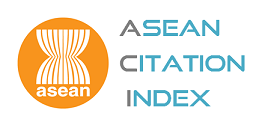Thailand’s Brand: Brand Communication for Creating Image of the Country and Thai Products or Services
Abstract
This research aims to study exporters’ perspectives of Thailand’s brand communication from 2011 – 2013 and its factors, which are brand identity, brand image and, integrated communication. The study also aims to examine the relationship between these factors, and to demonstrate whether these three factors can be positively linked to Thailand’s brand communication. Brand personality (sincerity, excitement, competence, sophistication, and ruggedness) was applied as a corporate image concept to explore Thailand’s brand in terms of brand image, which is communicated via various attributes and personality traits.
This survey research is a cross-sectional study of two sample groups of 525 Thai exporters who are members of the ‘Thailand’s Brand’ scheme, and 525 non-members. A total of 1,050 subjects were selected from the 2012-2013 Thai Exporter List, using the stratified random sampling techniques. The surveys were conducted by mail, e-mail and, telephone. The instrument validity and reliability was assessed using the Item Objective Congruence Index: IOC and Cronbach’s Alpha Coefficient.
The findings revealed that there are significant and positive relationships between identity, image, and, integrated communication in Thai goods branding. The second order of factor analysis using LISREL revealed that Thailand’s brand communication model fitted well with the empirical data. The model’s first order factor analysis displayed the relationship between factors of Thailand’s brand identity, image and integrated communication, and observed variables. That is, Thailand’s brand identity factors had 15 indicators, Thailand’s brand image factors were comprised of 12 indicators, and integrated communication had 16 indicators.
Keywords: Thailand’s brand, Country Brand, Branding, Brand Communication
Downloads
How to Cite
Issue
Section
License
The opinions and ideas expressed in all submissions published in Thammasat Review are solely that of the author(s) and do not necessarily reflect that of the editors or the editorial board.
The copyright of all articles including all written content and illustrations belong to Thammasat Review. Any individuals or organisation wishing to publish, reproduce and distribute a particular manuscript must seek permission from the journal first.








